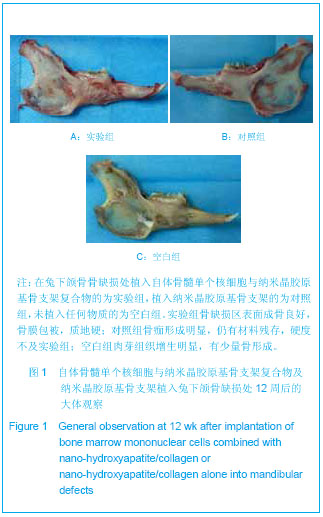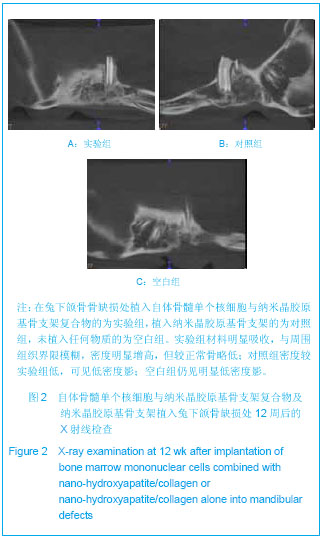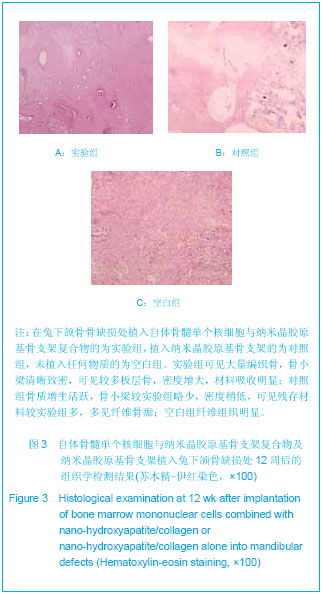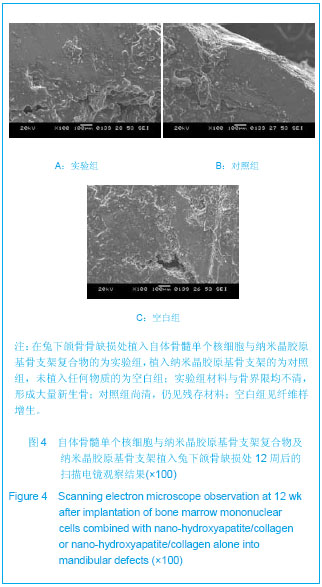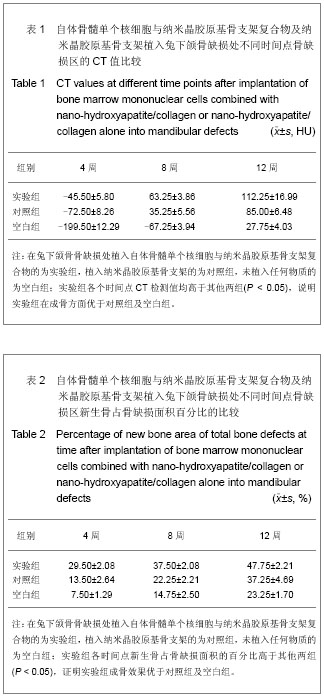| [1] 孙伟,李子荣,史振才,等.骨髓间充质干细胞对股骨头坏死缺损模型修复的组织学观察[J].中国康复理论与实践,2005,11(1):4-6.
[2] Solchaga LA,Zale EA. Prostaglandin E2: a putative potency indicator of the immunosuppressive activity of humanmesenchymal stem cells.Am J Stem Cells. 2012; 1(2): 138-145.
[3] Gu Q,Cai Y,Huang C,et al.Curcumin increases rat mesenchymal stem cell osteoblast differentiation but inhibits adipocyte differentiation.Pharmacogn Mag.2012;8(31): 202-208.
[4] Santander S,Alcaine C,Lyahyai J,et al. In vitro osteoinduction of human mesenchymal stem cells in biomimetic surface modified titanium alloy implants.Dent Mater J. 2012;31(5): 843-350.
[5] Heeger CH,Jaquet K,Thiele H,et al.Percutaneous, transendocardial injection of bone marrow-derived mononuclear cells in heart failure patients following acute ST-elevation myocardial infarction: ALSTER-Stem Cell trial.EuroIntervention. 2012;8(6):732-742.
[6] Prasad K,Mohanty S,Bhatia R,et al.Autologous intravenous bone marrow mononuclear cell therapy for patients with subacute ischaemic stroke: A pilot study.Indian J Med Res. 2012;136(2):221-228.
[7] Dumas A,Moreau MF,Ghérardi RK,et al.Bone grafts cultured with bone marrow stromal cells for the repair of critical bone defects: An experimental study in mice. J Biomed Mater Res A. 2009;90(4):1218-1229.
[8] Yamasaki T,Yasunaga Y,Ishikawa M,et al. Bone-marrow-derived mononuclear cells with a porous hydroxyapatite scaffold for the treatment of osteonecrosis of the femoral head: a preliminary study.J Bone Joint Surg Br.2010;92(3):337-341.
[9] Karatoprak O,Korkmaz MF,Kara AN,et al. Early results of autologous mononuclear bone marrow cell implantation in nontraumatic avascular necrosis of the femoral head.Acta Orthop Traumatol Turc.2008;42(3):178-183.
[10] Wang BL,Sun W,Shi ZC,et al.Treatment of nontraumatic osteonecrosis of the femoral head with the implantation of core decompression and concentrated autologous bone marrow containing mononuclear cells.Arch Orthop Trauma Surg.2010;130(7):859-865.
[11] Sun Y,Feng Y,Zhang C.The effect of bone marrow mononuclear cells on vascularization and bone regeneration in steroid-induced osteonecrosis of the femoral head.Joint Bone Spine.2009;76(6):685-690.
[12] Sen RK,Tripathy SK,Aggarwal S,et al. Early results of core decompression and autologous bone marrow mononuclear cells instillation in femoral head osteonecrosis: a randomized control study.J Arthroplasty. 2012;27(5):679-686.
[13] Brenneman M,Sharma S,Harting M,et al.Autologous bone marrow mononuclear cells enhance recovery after acute ischemic stroke in young and middle-aged rats.J Cereb Blood Flow Metab. 2010;30(1):140-149.
[14] Kamiya N,Ueda M,Igarashi H,et al.Intra-arterial transplantation of bone marrow mononuclear cells immediately after reperfusion decreases brain injury after focal ischemia in rats. Life Sci.2008;83(11-12):433-437.
[15] Giraldi-Guimarães A,Rezende-Lima M,Bruno FP,et al. Treatment with bone marrow mononuclear cells induces functional recovery and decreases neurodegeneration after sensorimotor cortical ischemia in rats. Brain Res. 2009;1256: 108-120.
[16] Traverse JH,Henry TD,Moye' LA.Is the measurement of left ventricular ejection fraction the proper end point for cell therapy trials? An analysis of the effect of bone marrow mononuclear stem cell administration on left ventricular ejection fraction after ST-segment elevation myocardial infarction when evaluated by cardiac magnetic resonance imaging.Am Heart J. 2011;162(4):671-677.
[17] Pokushalov E,Romanov A,Chernyavsky A,et al.Efficiency of intramyocardial injections of autologous bone marrow mononuclear cells in patients with ischemic heart failure: a randomized study.J Cardiovasc Transl Res. 2010;3(2): 160-168.
[18] Moniche F,Gonzalez A,Gonzalez-Marcos JR,et al.Intra-arterial bone marrow mononuclear cells in ischemic stroke: a pilot clinical trial.Stroke. 2012;43(8):2242-2244.
[19] 廖福琴,张洁,吴燕丽,等.胶原基纳米骨修复拔牙创及颌骨囊肿术后骨腔的疗效观察[J].中国骨质疏松杂志,2004,10(3):316-329.
[20] 张丽军,王影,吴燕丽,等.胶原基纳米骨修复兔下领骨缺损的实验研究[J].中国骨质疏松杂志,2004,10(2):155-157.
[21] 沈铁城,黄永辉,徐晓峰,等.纳米晶胶原基骨材料在临床上的应用[J].医学研究杂志,2006,35(4):70-73.
[22] Liu X,Liu HY,Lian X,et al.Osteogenesis of mineralized collagen bone graft modified by PLA and calcium sulfate hemihydrate: In vivo study. J Biomater Appl. 2013;28(1): 12-19.
[23] Wu DJ,Hao AH,Zhang C,et al.Promoting of angiogenesis and osteogenesis in radial critical bone defect regions of rabbits withnano-hydroxyapatite/collagen/PLA scaffolds plus endothelial progenitor cells.Zhonghua Yi Xue Za Zhi. 2012; 92(23):1630-1634. |
